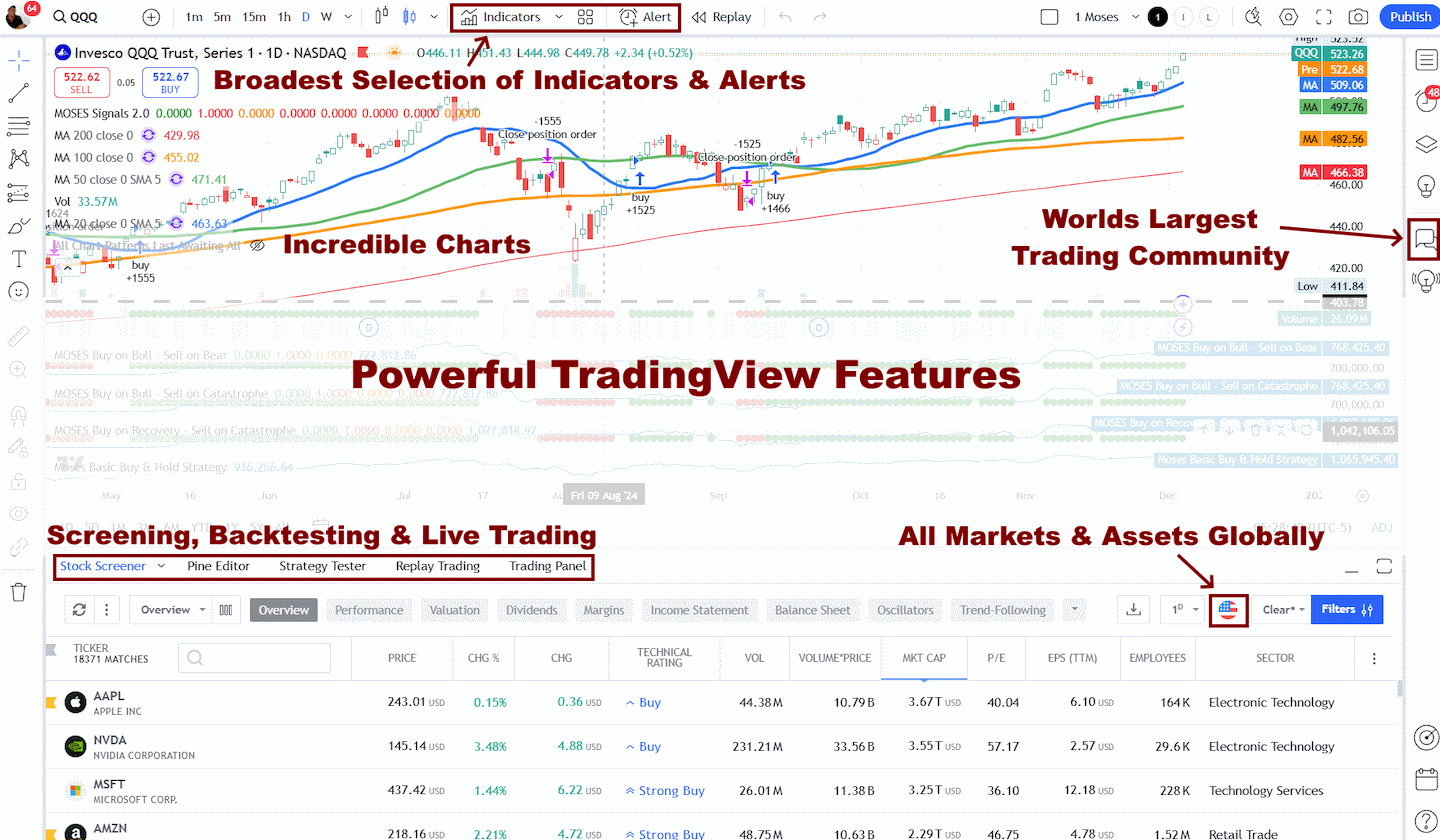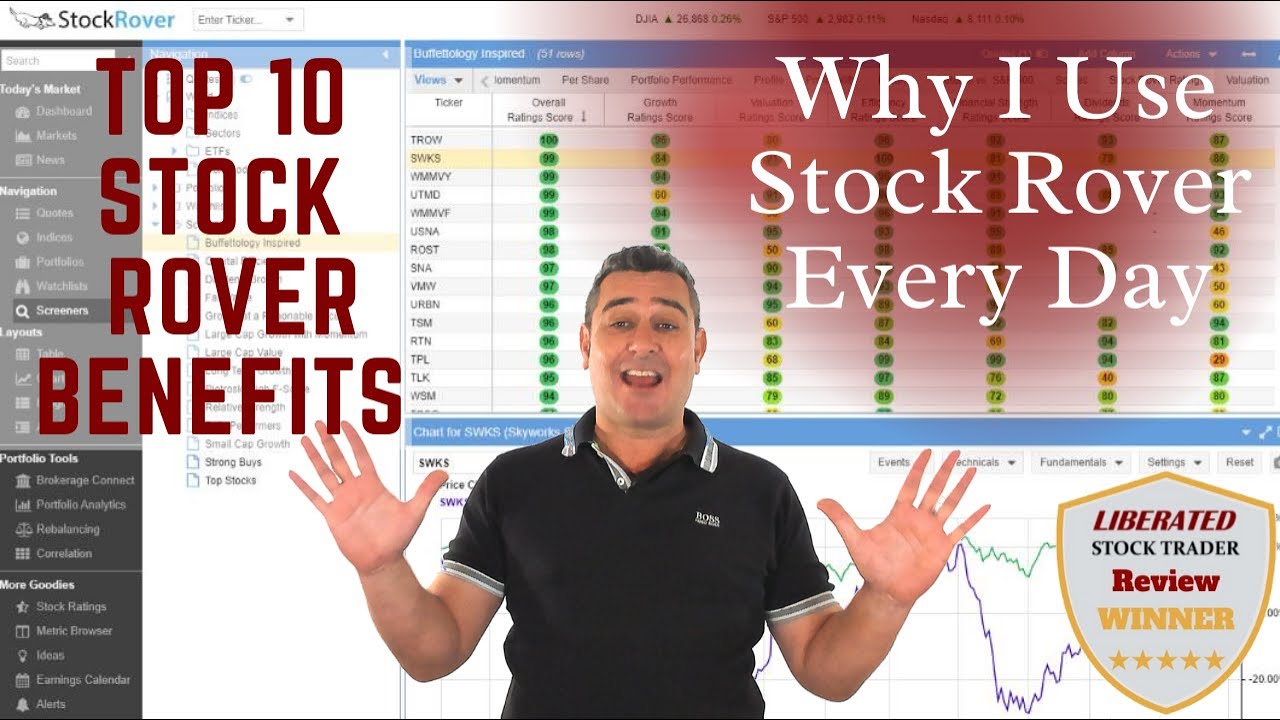Popeyes Louisiana Kitchen is a popular fast-food chain known for its delicious fried chicken and spicy Cajun-inspired dishes. Founded in 1972, Popeyes has grown to become one of the largest quick-service restaurants in the United States.
But there’s more to Popeyes than just great food. The company is also committed to giving back to the community through various charitable initiatives and partnerships. In fact, since 2008, Popeyes has raised over
Popeyes Louisiana Kitchen is no longer a publicly traded company. Since 2017, it has been a subsidiary of Restaurant Brands International (NYSE: QSR).
Popeyes traded on the NASDAQ under the ticker symbol PLKI between 2008 and 2017. Popeyes stock was popular with investors because of its high returns.
Popeyes Stock
Popeyes stock is not available to buy on any stock exchange. You can invest in Popeyes by buying shares in Restaurant Brands International (Ticker: QSR), the parent company owning 100% of Popeyes stock.
You invest in Popeyes by buying Restaurant Brands International (QSR) stock. Popeyes is a Cajun-themed fast food chain popular for its tasty chicken.

Note: This is an unbiased research report. The author or Liberated Stock Trader is not affiliated, paid by, or owns stock in any of the companies mentioned in this report.
Popeyes Stock Price
Popeyes does not have a stock price because it is not publicly traded. You can invest in Popeyes by buying shares in its parent company, Restaurant Brands International (Ticker: QSR) on the NYSE.
See the QSR Stock Chart Live on TrendSpider
Popeyes Stock Symbol
Popeyes does not have a stock symbol because the company is not available to buy on any stock exchange. The stock ticker symbol for Popeyes is QSR because Restaurant Brands International purchased Popeyes in 2017.
From 2008 to 2017, Popeyes Louisiana Kitchen stock traded under the stock symbol PLKI. This stock symbol/ticker is no longer on the New York Stock Exchange (NYSE) because it is no longer a publicly traded entity, having been absorbed into the Restaurant Brands International (NYSE: QSR) family of companies.
Who owns Popeyes?
Restaurant Brands International (QSR) owns 100% of Popeyes stock. QSR is a holding company formed by the 2014 merger between Burger King and Tim Horton’s.
Popeyes stock is wholly owned by Restaurant Brands, whose subsidiaries include Popeyes Louisiana Kitchen, Burger King, and Tim Horton’s.
Burger King is the second-largest hamburger chain in the world. Restaurant Brands claims Burger King operates over 17,800 locations in over 100 countries. Burger King is famous for its flame-broiled burgers and trademark Whopper burger.
Burger King has no corporate-owned restaurant locations. Franchisees own and operate all Burger King locations.
Tim Horton’s is North America’s second-largest coffee shop chain after Starbucks (NASDAQ: SBUX). Tim Horton’s is known for donuts, fresh baked goods, sandwiches, soup, and chili. Legendary Canadian hockey player Tim Horton and their partner Jim Charade founded Tim Horton’s in Hamilton, Ontario, in 1964.
Restaurant Brands claims Tim Horton’s operates over 4,800 stores in Canada, the United States, and other countries. Tim Hortons is Canada’s largest fast-food chain.
4 Alternatives to Popeyes Stock
Restaurant Brands International is the fifth-largest fast-food operator in the world. Restaurant Brands’ headquarters are in Toronto, but Popeyes and Burger King are headquartered in Miami. The Brazilian Investment company 3G Capital owns 51% of Restaurant Brands International.
1. Restaurant Brands International (NYSE: QSR)
Restaurant Brands make money from their franchises. Stock Rover reports that Restaurant Brands’ revenue growth fell because many people work from home and do not go to Popeyes, Tim Horton’s, or Burger King for lunch.
See the QSR Stock Chart Live on TrendSpider
Restaurant Brands is a diversified company. It operates four different brands, each selling a different menu. This means Restaurant Brands can keep making money if tastes change. If people stop buying burgers, they could buy submarine sandwiches from Firehouse Subs or chicken from Popeye’s.
Restaurant Brands further diversifies its operations by selling coffee through Tim Horton’s. Tim Horton’s is the fifth largest coffee shop chain in the United States, with 626 locations in 10 states. The largest coffee shop chain, Starbucks (SBUX), had 51,836 US locations in 2022.
Diversification protects Restaurant Brands from a changing market and aggressive competition in the burger segment. It also allows Them to tap different markets. For example, Firehouse Subs caters to upscale customers, Tim Horton’s serves coffee drinkers, Popeye’s serves chicken lovers, and Burger King serves working-class diners.
Another value proposition at Restaurant Brands is its ability to sell cheap food. This allows Restaurant Brands to profit in a poor economy because people still need to eat and hate to cook in terrible times. There are also many situations where people need to save money but cannot cook.
In good times, people have extra cash for Whoppers, onion rings, Popeye’s Chicken, Tim Horton coffee and donuts, and Firehouse Subs. Restaurant Brands is a company that thrives in any economy.
My thorough testing awarded TradingView a stellar 4.8 stars!
With powerful stock chart analysis, pattern recognition, screening, backtesting, and a 20+ million user community, it’s a game-changer for traders.

Whether you're trading in the US or internationally, TradingView is my top pick for its unmatched features and ease of use.
Explore TradingView – Your Gateway to Smarter Trading!
2. Yum! Brands (NYSE: YUM)
Other companies are poised to cash in on the same trends as Restaurant Brands International (QSR).
Yum Brands! (YUM) operates four fast-food chains. It owns three of the world’s largest and best-known fast-food brands: Kentucky Fried Chicken (KFC), Pizza Hut, and Taco Bell. Yum also owns a newer hamburger chain called The Habit Burger Grill.
Kentucky Fried Chicken operates over 23,000 restaurants in over 135 countries. Pizza Hut operates over 18,000 pizzerias in over 100 countries. Taco Bell operates 350 franchise organizations and over 7,000 restaurants in almost 30 countries. The Habit Burger Grill operates almost 300 hamburger restaurants in China and the United States.
Yum! Brands do not own the rights to KFC, Taco Bell, and Pizza Hut in China. Another company they call Yum China Holdings (NYSE: YUMC) owns those restaurants.
Yum! Brands are struggling to attract customers in the United States. Many Americans prefer higher quality fast food, such as Chipotle Mexican Grill (CMG) and Chick-fil-A, to Yum’s products. Taco Bell and KFC have reputations for selling cheap, low-quality food for working-class people in the United States.
Yum! Brands are trying to capitalize on the quality burger fad with the Habit Burger Grill. Some investors think Yum! is recession-resistant because it operates in many countries.
Yum! Brands is a growing company, according to Stock Rover.
| Stock Rover Growth Rankings | Stock | Industry | S&P 500 |
|---|---|---|---|
| Growth Score | 81 | 67 | 76 |
| Sales Growth Next Year | 5.8% | 8.8% | 5.9% |
| Sales 1‑Year Chg (%) | 2.0% | 41.3% | 0.5% |
| Sales 3‑Year Avg (%) | 6.2% | 4.6% | 13.3% |
| Sales 5‑Year Avg (%) | 2.7% | 3.2% | 11.9% |
Get Stock Rover Free – The King of Stock Research
There is a growing middle-class market for fast food in China. McKinsey & Company estimates China’s middle class will grow to 600 million in 2024. That means China’s Middle Class could be one and a half times larger than the US population. The United States had a population of around 331 million.
Overall, China’s Middle Class grew from 29 million in 1999 to 531 million in 2019, McKinsey & Company estimates. That means 39% of China’s population is now part of the middle class and has money to spend on fast food.
People looking for a fast-food stock that makes money but has enormous growth potential need to examine Yum! China.
3. Starbucks Corporation (NASDAQ: SBUX)
Starbucks (SBUX) operates 31,256 coffee shops worldwide. Starbucks is different from most fast-food brands because it owns a large percentage of its coffee shops.
Starbucks owned all 3,521 of its Chinese coffee shops and 8,591 American locations in 2022, 1,286 stores in Japan, 1,109 Canadian stores, 653 stores in the United Kingdom, and 352 stores in Thailand in 2023.
The advantage of owning the stores is that Starbucks gets all the revenue from those coffee shops. Another advantage is that the Starbucks Corporation can borrow against the shops when it needs cash.
The disadvantage is that Starbucks takes all the risks store ownership creates. Another disadvantage is that Starbucks has to pay the employees and cover all the expenses for the stores.
Owning the stores allows Starbucks to maintain control and enforce high quality and customer service standards. Firing a lazy or incompetent manager is easy, but getting rid of a bad franchisee can be expensive and difficult.
Starbucks is successful because of the high quality of its coffee. Starbucks is a middle-class brand that prospers in countries with large middle classes. Starbucks’ main markets include China, which had a middle class of 531 million people in 2019.
Starbucks is a cash-rich company with $4.195 billion in cash and short-term investments.
Starbucks is a good company because it has diversified operations in several countries. Starbucks is a diversified investment because it has large footprints in China and the United States. Starbucks can make money if China grows, but it can also profit from an American renaissance.
Starbucks’ risk is that its coffee shops need many people working away from home to make money. When many people work from home, they make coffee, which limits Starbucks’ customer base.
Starbucks can adapt to this situation by adding drive-through facilities to its restaurants and offering delivery. Such changes will be expensive. One way for Starbucks to adapt is to offer its coffee through grocery delivery services such as Instagram. Another is to combine the delivery of its coffee with food from other restaurants such as McDonald’s (MCD).
Starbucks’s problem is that it concentrates on one area of the quick-service sector, leaving it vulnerable to catastrophes such as coronavirus.
4. McDonald’s (NYSE: MCD)
McDonald’s (MCD) is the world’s most famous burger chain, with over 38,000 locations in 118 countries and territories worldwide.
See the McDonald’s Stock Chart Live
McDonald’s has a worldwide brand value of $154.9 billion and operates 40,031 restaurants worldwide.
Over 69 million people worldwide eat at McDonald’s daily, and McDonald’s sells 3.29 billion pounds of French fries yearly.
Many investors like McDonald’s because of its revenues. Stock Rover estimates McDonald’s revenues grew by 40% between 2020 and 2024.
International markets are the principal source of McDonald’s revenues. Stock Rover reports show international markets generated 54% of McDonald’s revenues in 2022. The United States was the second largest source of McDonald’s revenues, contributing 41% in 2021. Around 9% of McDonald’s revenues came from international developmental licensed markets in 2021.
Stock Rover Quality Rankings for McDonald’s 2023
| Profitability | Stock | Industry | S&P 500 |
|---|---|---|---|
| Quality Score | 84 | 56 | 76 |
| Gross Margin | 56.1% | 32.8% | 29.8% |
| Operating Margin | 43.7% | 13.5% | 14.6% |
| Net Margin | 25.4% | 8.0% | 11.1% |
| Return on Assets | 12.2% | 10.9% | 8.0% |
| Return on Equity | -90.0% | -101.7% | 33.8% |
| ROIC | 17.4% | 18.1% | 19.7% |
Stock Rover Rankings: McDonald’s vs. Competitors 2023
| Ticker | Company | Cap ($M) | P/E | Change (%) |
|---|---|---|---|---|
| MCD | McDonald’s | $200,369 | 34.5 | -0.2% |
| SBUX | Starbucks | $123,118 | 37.9 | 0.5% |
| CMG | Chipotle… | $43,354 | 54.5 | 0.8% |
| YUM | Yum Brands | $36,912 | 29.8 | 0.5% |
| YUMC | Yum China… | $24,404 | 29.0 | 2.1% |
Get Stock Rover – The King of Stock Research
McDonald’s is a popular dividend stock. Between March 15, 2023, and October 11, 2024, its management scheduled eight quarterly $1.52 dividends. Dividend.com estimates McDonald’s was offering a $6.08 forward dividend in January 2023.
The value propositions at McDonald’s include the powerful brand, the large revenues, and the dividends.
People always need to eat, and McDonald’s has a reputation for selling cheap, good food. This lets McDonald’s thrive in good times when people can afford Big Macs and in poor economies when consumers need to grab a cheap meal.
In recent years, McDonald’s has been struggling in North America, facing stiff competition from many fast-food chains. McDonald’s has closed stores in North America. McDonald’s closed around 200 stores in North American Walmart (WMT) supercenters.
The McDonald’s locations are closing because there is less demand for burgers. Walmart is replacing McDonald’s with Taco Bell, Domino’s Pizza, and Charley’s Philly Steaks stores.
Investing In Stocks Can Be Complicated, Stock Rover Makes It Easy.
Stock Rover is our #1 rated stock investing tool for:
★ Growth Investing - With industry Leading Research Reports ★
★ Value Investing - Find Value Stocks Using Warren Buffett's Strategies ★
★ Income Investing - Harvest Safe Regular Dividends from Stocks ★

"I have been researching and investing in stocks for 20 years! I now manage all my stock investments using Stock Rover." Barry D. Moore - Founder: LiberatedStockTrader.com
The Future of Fast Food
Fast food and quick-service restaurant stocks are still good investments. The fast food market is growing, but it is undergoing enormous changes. Investors need to understand that some fast-food restaurants will collapse while others change.
Fast food is a money-making sector that investors need to be careful with.
Are You Looking For Stock Investing & Trading Software? Here Are My Favorites.
My favorite software for trading is TradingView because it does everything well. It has backtesting, great charts, stock screening, and an active community of over 3 million people sharing ideas, plus a free plan available globally.
My favorite software for investing is Stock Rover, as it specializes in deep fundamental financial screening, research, and portfolio management. It is the ideal platform for dividend, value, and growth investing.
My favorite software for stock market news is Benzinga Pro, with its super-fast real-time news engine, squawk box, and news impact ratings.
My favorite AI trading software is TrendSpider which enables automatic pattern recognition for Trendlines, Candlesticks, and Fibonacci levels. Trade Ideas uses AI to generate high probability daily trading signals for auto-trading.
My favorite stock-picking service is Motley Fool Stock Advisor, which has a proven track record of beating the market with excellent stock research reports.
Read the Full Top 10 Stock Market Software Testing & Review
